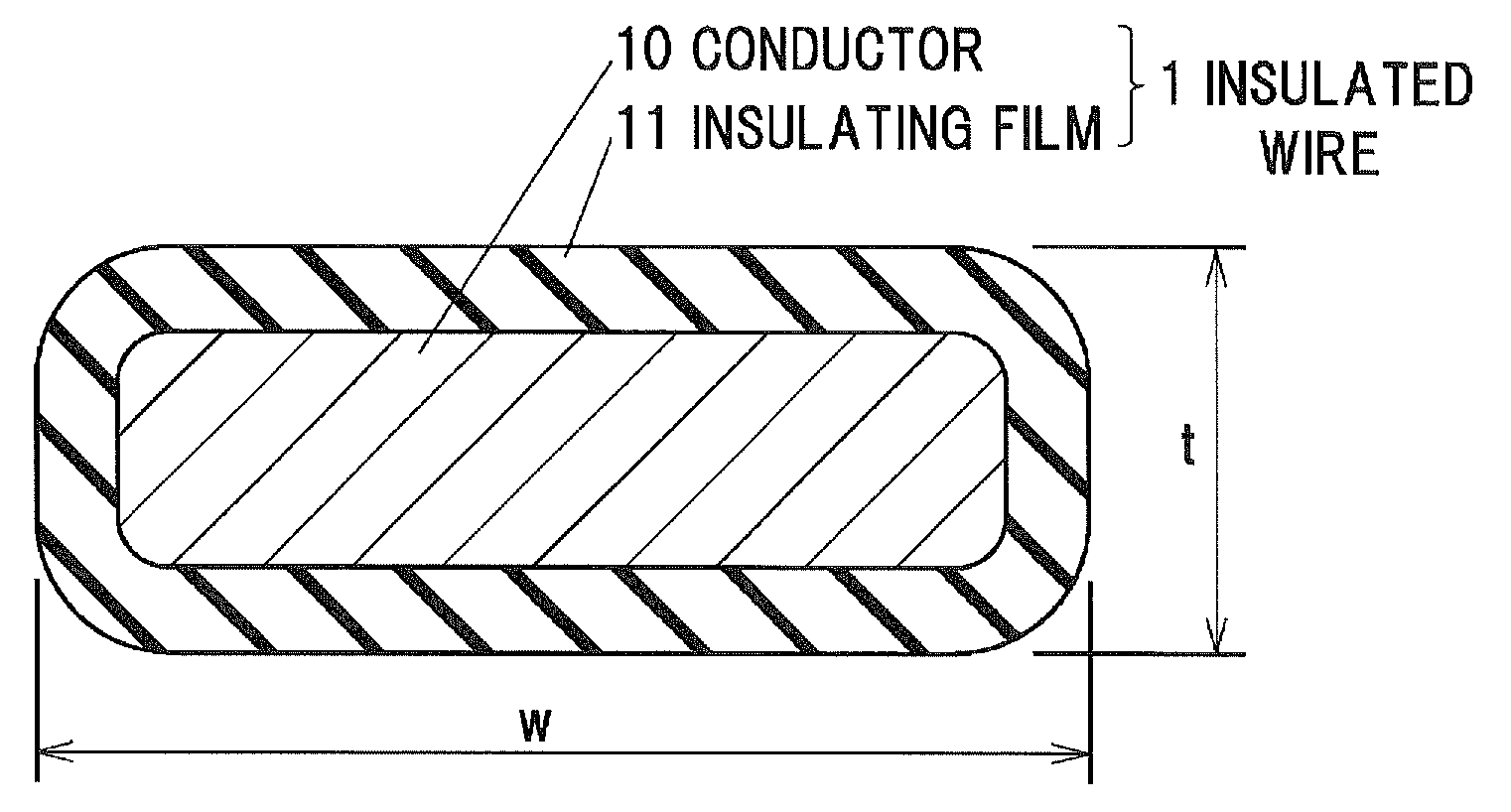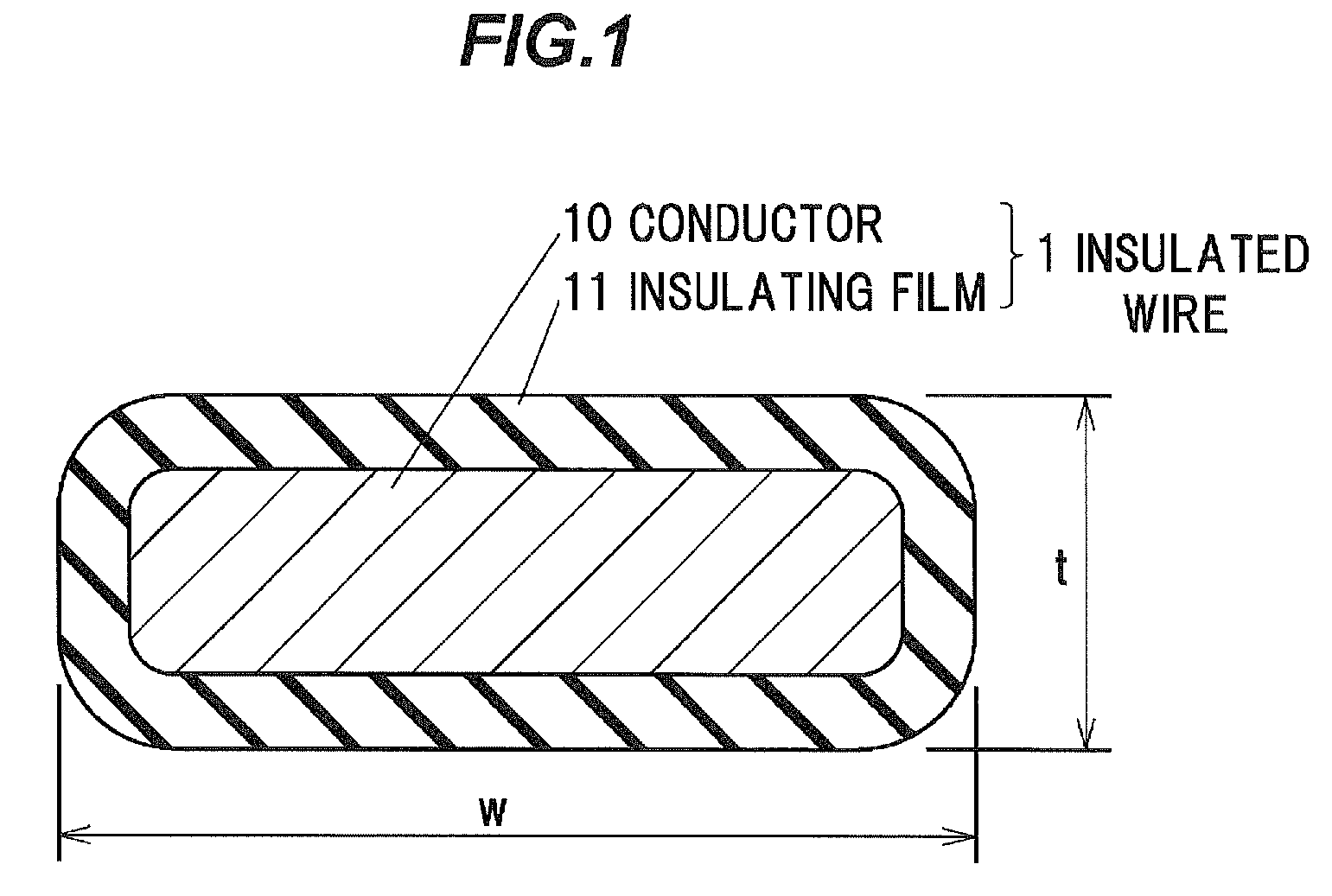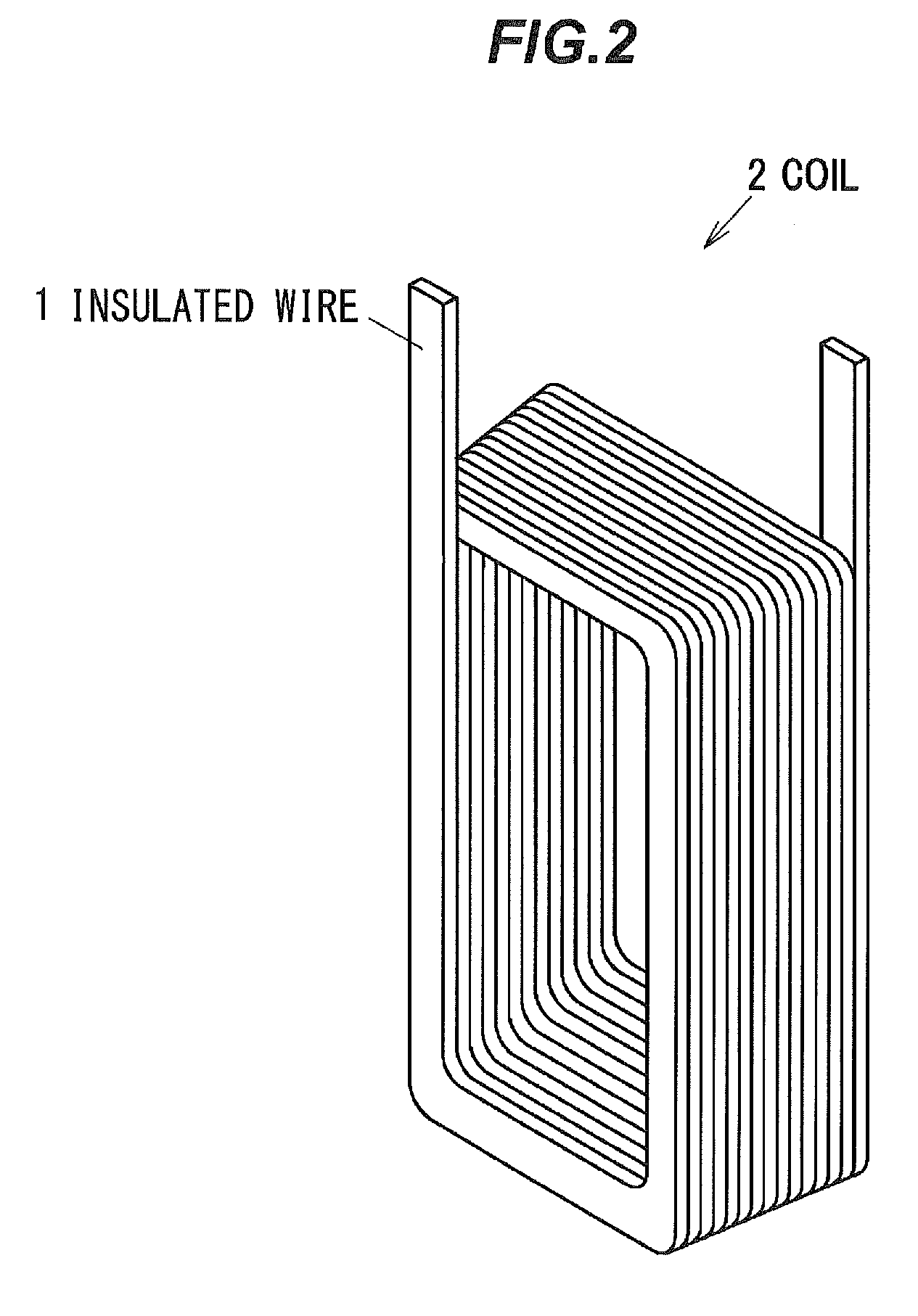Insulated wire and coil formed by using the same
a technology of insulated wire and coil, which is applied in the direction of plastic/resin/waxes insulators, organic insulators, electrical appliances, etc., can solve the problems of insufficient flexibility and damage such as cracks, and achieve the effect of improving the space factor of winding and preventing damag
- Summary
- Abstract
- Description
- Claims
- Application Information
AI Technical Summary
Benefits of technology
Problems solved by technology
Method used
Image
Examples
embodiments
[0024]Insulated Wire
[0025]FIG. 1 is a cross-sectional view schematically showing an insulated wire 1 according to the embodiment of the invention. The insulated wire 1 is a flat type insulated wire that includes a conductor 10 and an insulating film 11 formed on the periphery of the conductor 10. Reference marks of “w” and “t” in FIG. 1 represent a width and a thickness of the insulated wire 1 respectively.
[0026]In the insulated wire 1, damage such as crack does not occur in the insulating film 11, even if a bending process is applied to the insulated wire 1, in which such a processing stress as to deform the insulating film 11 is added. For example, damage such as crack does not occur in the insulating film 11, even if the insulated wire 1 is bent by 180 degrees in the width (w) direction of the conductor 10.
[0027]The conductor 10 is a flat type conductor wire comprised of a conductive material such as copper. As the copper, oxygen free copper, low oxygen copper or the like is most...
example 1
[0059]The first insulating layer was formed by coating a flat type copper conductor with the resin varnish 1 and baking the resin varnish 1, and then the second insulating layer was formed by further coating with the resin varnish 1 and baking the resin varnish 1, so that an insulated wire of Example 1 was formed. In Example 1, the second insulating layer is formed of the resin varnish 1, thus the second insulating layer has breaking elongation percentage of 145% and glass-transition temperature of 307 degrees C.
example 2
[0060]The first insulating layer was formed by coating a flat type copper conductor with the resin varnish A and baking the resin varnish A, and then the second insulating layer was formed by further coating with the resin varnish 1 and baking the resin varnish 1, so that an insulated wire of Example 2 was formed. In Example 2, the second insulating layer is formed of the resin varnish 1, thus the second insulating layer has breaking elongation percentage of 145% and glass-transition temperature of 307 degrees C.
PUM
| Property | Measurement | Unit |
|---|---|---|
| breaking elongation percentage | aaaaa | aaaaa |
| molar ratio | aaaaa | aaaaa |
| size | aaaaa | aaaaa |
Abstract
Description
Claims
Application Information
 Login to View More
Login to View More - R&D
- Intellectual Property
- Life Sciences
- Materials
- Tech Scout
- Unparalleled Data Quality
- Higher Quality Content
- 60% Fewer Hallucinations
Browse by: Latest US Patents, China's latest patents, Technical Efficacy Thesaurus, Application Domain, Technology Topic, Popular Technical Reports.
© 2025 PatSnap. All rights reserved.Legal|Privacy policy|Modern Slavery Act Transparency Statement|Sitemap|About US| Contact US: help@patsnap.com



